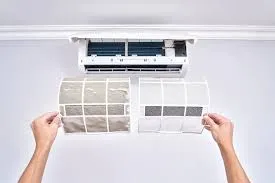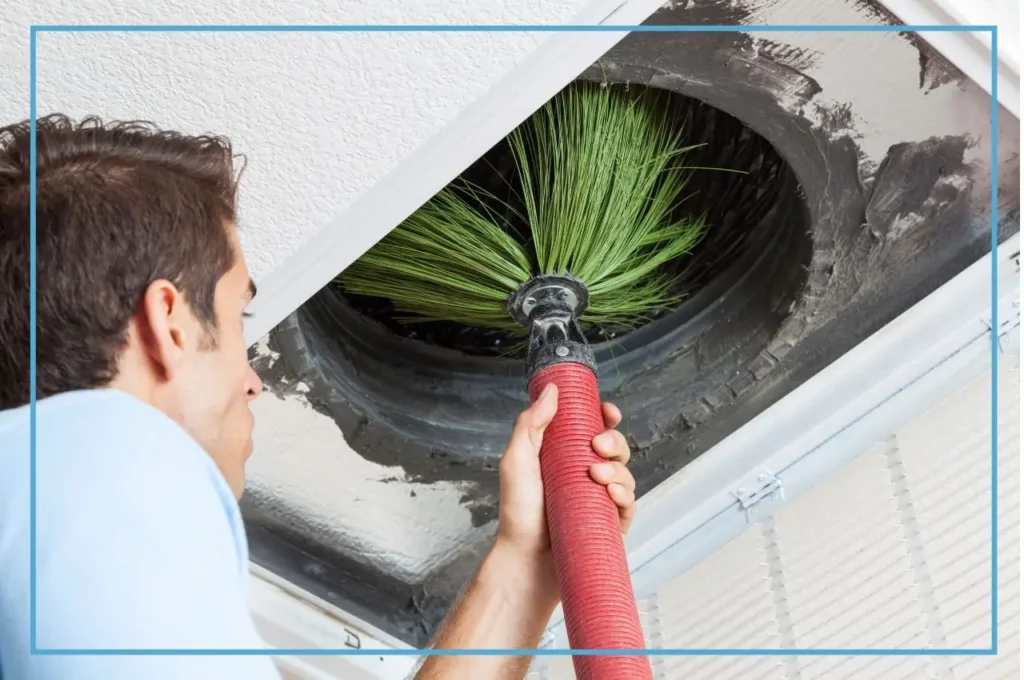Walk into most Dubai homes during summer, and you’ll immediately notice that familiar musty smell mixed with the hum of air conditioning. What many residents don’t realize is that this odor often comes from their AC system, specifically from mold growing in places they never think to check.
The drain tray in your air conditioning unit might be the most overlooked component in your home, yet it’s often the biggest culprit behind indoor air quality issues. In Dubai’s unique climate, this small plastic tray becomes a breeding ground for mold, bacteria, and algae faster than you might imagine.
Why Dubai’s Climate Creates Perfect Mold Conditions
Dubai’s combination of extreme heat and high humidity creates a perfect storm for mold growth. When your AC runs continuously, which it does for most of the year, it pulls moisture from the air and deposits it into the drain tray.
The problem isn’t just the water itself. It’s what happens when that water sits in a warm, dark environment with dust, skin cells, and other organic matter that gets pulled through your system.
Most people assume their AC drain tray empties automatically. While newer systems do have drainage mechanisms, they often get clogged with debris. Even when they work properly, a thin film of moisture and organic material remains—exactly what mold needs to thrive.
The Hidden Dangers Most Homeowners Miss
Here’s what happens in a typical Dubai apartment or villa: your AC runs almost 24/7 from April through October. The drain tray collects condensation, but because it’s hidden inside the unit, you never see it getting progressively dirtier.
The first sign isn’t always visible mold. It’s usually the smell—that slightly sour, musty odor that seems to come from your vents. By the time you notice it, mold colonies have likely been established for weeks or months.
What makes this particularly concerning is that every time your AC kicks on, it’s potentially circulating mold spores throughout your living space. This is especially problematic for families with children, elderly residents, or anyone with respiratory sensitivities.
Common Mistakes That Make the Problem Worse
The biggest mistake I see homeowners make is thinking that changing their AC filter is enough. While filters are important, they don’t address what’s already growing in your drain tray.
Another common error is using household cleaners on AC components. Bleach and harsh chemicals can damage the plastic components and create fumes that get circulated through your home. They also don’t address the root cause—the conditions that allow mold to grow in the first place.
Many residents also wait until they see visible mold or smell obvious odors before taking action. By this point, the problem has usually spread beyond just the drain tray to other parts of the AC system.
Professional AC Drain Tray Cleaning Dubai: What Works
Effective drain tray cleaning goes beyond just removing visible mold. It involves treating the biofilm—that slimy layer where bacteria and mold actually live—and addressing the conditions that allow them to return.
Professional cleaning typically involves removing the drain tray entirely, which requires knowledge of different AC system configurations. Each brand and model has slightly different access points and removal procedures.
The cleaning process itself uses specialized antimicrobial treatments that are safe for indoor use but effective against mold, bacteria, and algae. These treatments also help prevent regrowth for several months.
What to Look For in Your System
You can check your own drain tray if you’re comfortable accessing your AC unit. Look for standing water that appears cloudy or has a film on top. Any visible discoloration or slimy texture indicates bacterial or mold growth.
The smell test is often more reliable than visual inspection. If you notice musty odors that seem stronger when your AC first kicks on, or if the smell varies depending on which room’s AC is running, your drain trays likely need attention.
Pay particular attention to units in bedrooms and closed spaces, where air circulation is limited. These tend to develop problems faster than units in open living areas.
Prevention Strategies That Work in Dubai
The most effective prevention is regular maintenance every 3-4 months during peak AC season. This isn’t just about cleaning—it’s about ensuring proper drainage and airflow.
Keep the area around your indoor AC units clear of furniture and decorations. Poor airflow around the unit creates the stagnant conditions that mold loves.
Consider upgrading to higher-quality air filters and changing them more frequently during summer months. While this won’t solve drain tray issues, it reduces the organic material that feeds mold growth.
When DIY Isn’t Enough
Some homeowners attempt drain tray cleaning themselves, but there are several situations where professional intervention is necessary. If you’re seeing visible mold growth, smelling persistent odors, or dealing with recurring problems despite cleaning, the issue has likely spread beyond what basic cleaning can address.
Professional AC drain tray cleaning in Dubai also includes inspection of drainage lines, which often get clogged with algae buildup. This requires specialized tools and knowledge of different system configurations.
Protecting Your Investment and Your Health
Your air conditioning system is one of your home’s most important investments, especially in Dubai. Regular drain tray maintenance extends the life of your equipment and maintains its efficiency.
More importantly, it protects your family’s health. Poor indoor air quality affects sleep, concentration, and overall well-being—issues that are easily prevented with proper AC maintenance.
The cost of regular professional cleaning is minimal compared to the potential health impacts or the expense of replacing an entire AC system that’s been damaged by neglect.
Moving Forward: Simple Steps for Better Air Quality
Start by scheduling an inspection of all your AC units’ drain trays. Even if you don’t see obvious problems, establishing a baseline helps you understand what normal maintenance should look like for your specific systems.
Document when each unit was last serviced and create a simple maintenance schedule. Different rooms and different AC units often need attention at different intervals based on usage patterns.
Consider the timing of professional cleaning. The best time is typically in March or early April, before the heavy summer usage begins, and again in October when usage starts to decrease.
Remember that consistent, preventive maintenance is always more cost-effective and less disruptive than dealing with major mold problems after they’ve developed.
Frequently Asked Questions
1. How often should I clean my AC drain tray in Dubai?
Every 3-4 months during the peak summer season (April-October) and once during the winter months. High usage and humidity in Dubai require more frequent cleaning than cooler climates.
2. Can I clean the AC drain tray myself? Basic cleaning is possible if you can safely access the unit, but professional cleaning is recommended for thorough mold removal, biofilm treatment, and drainage line inspection.
3. How do I know if my AC drain tray has mold?
Common signs include musty odors when the AC starts, cloudy or slimy water in the tray, visible discoloration, or a persistent smell even after changing filters.
4. Is mold in the AC drain trays dangerous?
Yes, mold spores circulate through your home’s air system, potentially causing respiratory issues, allergies, and other health problems, especially for sensitive individuals.
5. How much does professional AC drain tray cleaning cost in Dubai?
Costs vary by system size and complexity, but regular maintenance is significantly cheaper than dealing with major mold problems or AC system replacement due to neglect.


